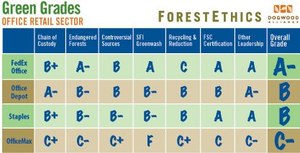Montgomery County Maryland Saves $2 Million Taxpayer Dollars with Paper and Printing Efficiency
A little over a year ago, Environmental Paper Network was contacted by Montgomery County, Maryland to provide advice, contacts and resources on paper use efficiency. In August of 2009, the County instituted a paper and printing reduction initiative to reduce waste and save taxpayer dollars. The results from year one of the program are in! This past week Montgomery County announced it had saved $2 million (US) and avoided the use of 3,000 trees last year through the initiative.
The paper and printing reduction initiative launched last year by County Executive Isiah Leggett has resulted in a 20 percent reduction in overall County paper purchases, and a $2.09 million savings in printing and mail expenditures, while reducing the County’s environmental footprint. The information was reported at a meeting of the CountyStat program, which reviewed the County’s progress toward the initial goals and recommended an additional target reduction of 3 to 5 percent moving forward.
CountyStat is an accountability and assessment process that reinforces the County government’s focus on results in an effort to improve performance. Through a series of presentations and meetings, CountyStat provides a forum to continually monitor and measure the effectiveness and efficiency of County government services, and is responsible for ensuring Data-Driven Performance, promoting strategic governance, increasing government transparency and fostering a culture of accountability.
The initial goal of the paper and printing reduction effort was to reduce paper use 15 percent in a year and save the County approximately $1 million. County departments not only met the goal but exceeded it -- saving more than $2 million compared to the latest FY10 budget, and reducing paper use by more than 52 million sheets.
One example of how County departments saved paper and printing costs can be found in the Department of Environmental Protection, which changed the way it provided construction-related solicitations to vendors. Instead of providing printed engineering drawings with solicitations, the department began to attach electronic copies of the drawings on CDs with detailed printing instructions for those vendors who need to print selected pages.
“I am very pleased with our progress on this initiative,” said Leggett. “Good government is important in Montgomery County, and CountyStat ensures that our programs and services are efficient and effective. Our taxpayers deserve the best possible value for their tax dollars, and with CountyStat overseeing our operations, I believe they are getting that.”
For great ideas on paper use efficiency get a short fact sheet here or check out Shrink!
.jpg)








